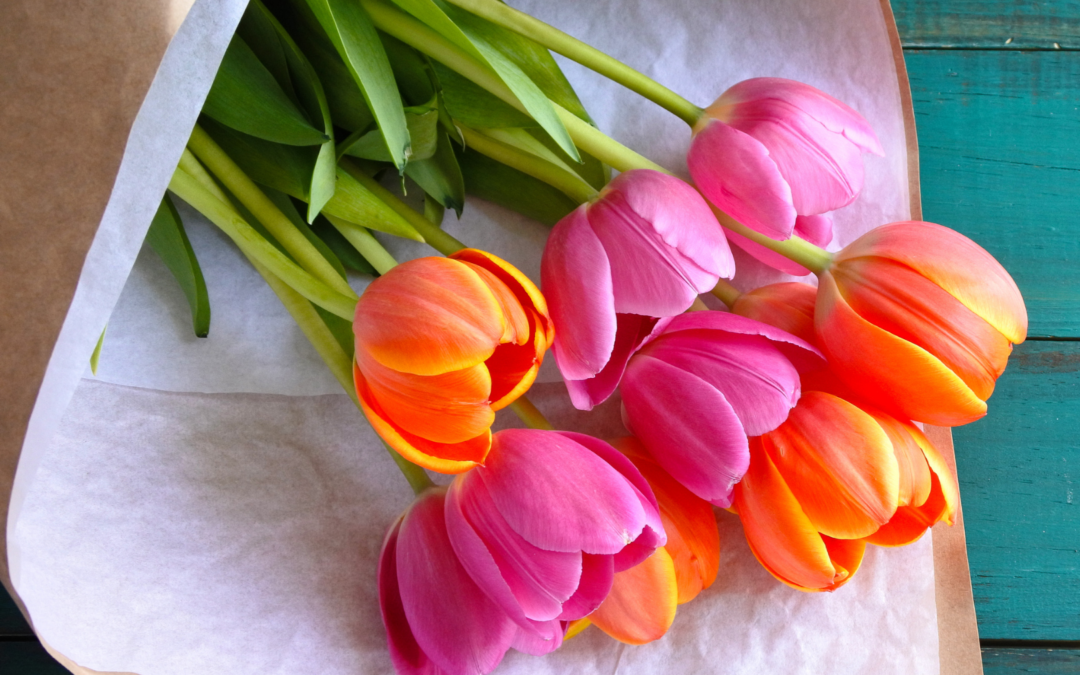
by Wildwood Outdoor Living | Sep 23, 2021 | Gardening 101
Just when you think winter couldn’t get any more windy, wet, and cold, you step outside and notice something new. Something emerging from the ground that reminds you that spring is on its way! And it’s all thanks to you and your fall bulb planting back in October! When planting fall bulbs, Tulips are famous for making an early, long-lasting, spring entrance which makes them one of the most popular fall bulb choices. In this article, we’re going to teach you what there is to know about our friend the Tulip and how you can get started on your very own this fall.
About Tulips
From classic folklore tales of “true romance”, the Tulip has been crowned the flower of perfect and deep love, making them ideal for gifting to your partner, children or family. Originally from Turkey, the Tulip comes in over 150 varieties. The most common varieties of Tulips are Double Peony, Fringed Tulips, Triumph Tulips, Parrot Tulips, Single Early, Double Early and more! All incredibly different, with many different shapes and colours available in each variety.
Single Early Tulip
With their district cup shape and 6 petals, Single Early Tulips are on average 10-18 inches tall. Single Tulips are one of the earliest bloomers in cool weather and they also tend to last longer as well. Single Early Tulips pair well with Peonies and Clematis.

Fringed Tulip
Also known as “Crispa”, Fringed Tulips are famous for their soft fringe. They come in a variety of colors including pink, violet, yellow, white and red and grow up to 14-20 inches tall. Fringed Tulips perform beautifully on their own, or paired with slim flowers.

Double Early
Also known as Peony Tulips. Double Early Tulips resemble Peonies with their layered pedal arrangements. Double Early Tulips grow 10-16 inches tall and come in a huge variety of colors. Double Early Tulips are sensitive to rain, and prefer to be sheltered. These Tulips are versatile and go great with most flowers!

Parrot Tulips
Named after tropical parrots for their vibrant color and feather like pedals, the Parrot Tulip comes in a large variety of colors including red, orange, yellow, purple, pink, green and white. As a tall Tulip with long stems, the Parrot Tulip can get up to 3 feet tall, making them a delicate variety of Tulip. Add your Parrot Tulips to any flower arrangement for an eye catching exotic look.

How to Plant Tulips
Tulips are an easy to grow perennial that require little maintenance once they blossom. When choosing your Tulip bulbs, be sure to check whether the ones you’re choosing are fragrant are not, as not all Tulips are. This is especially important if you’re going to use your Tulips for fresh cut flowers. Once you have your Tulips selected, you’re ready to follow these quick and easy steps for growing them.
1.) Plant your Tulips= bulbs in September or October, when the soil is 15C in well-draining soil with full sun or partial shade.
2.) Plant the Tulip bulbs 5-7″ deep and 4-5″ apart, with the pointed side of the bulb face up.
3.) Water your bulbs well and wait for spring!
Once your Tulips have bloomed, be sure to allow the foliage to die back without pruning. This allows the foliage to fall to the ground, nourishing the soil for future growth. Tulips require little maintenance, with little to no watering depending on Mother Nature. If your Tulips aren’t getting enough rain, you can water them once a week.
Look at that, you’re ready to plant your own Tulips! Now you can expect beautiful Tulip blossoms year after year. With every year, comes more unique colorful combinations and varieties of Tulips for you to enjoy every spring. Happy gardening!
Have a question? Let us know at info@wildwoodoutdoorliving.com.
Sign up here for more blogs dedicated to better gardening

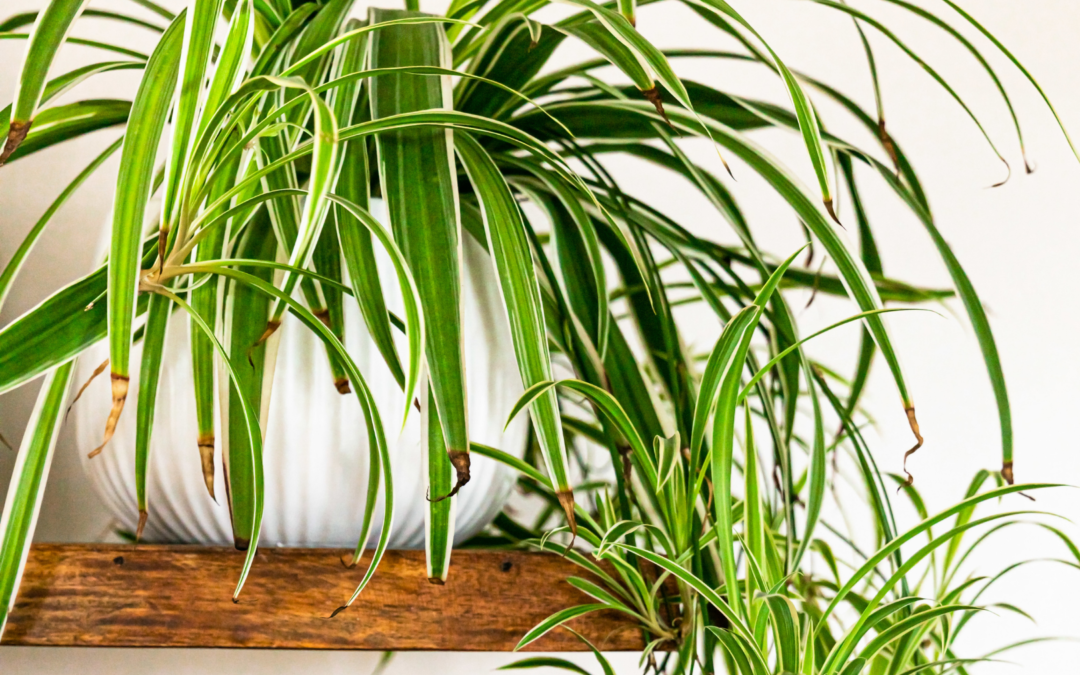
by Wildwood Outdoor Living | Sep 16, 2021 | Gardening 101
It’s getting chilly out and with the year we’ve all had, we know that being cooped up indoors can be tiring and mentally straining. Especially if you’re working from home, and have kids! Over the years, studies have proven the many benefits that plants have on our health and the proof is in the planting! As we trolled the internet we came across over 73 million search-related articles dedicated to the benefits that houseplants have on your health. The health benefits listed included mood improvement, reduced stress and anxiety, and improved air quality resulting in fewer headaches and improved respiratory illnesses.
Not only are they healthy for us, but houseplants are visually stimulating, affordable, and easy to take care of when choosing the right ones. In this article, we’ve compared several “top 10 best houseplants” articles and compiled a true list of the top 5 plants most recognized for their health benefits. Let’s dive into the five best of the best houseplants, for when it comes to improving your health.
1. Peace Lily

One of the most popular flowering houseplants, the Peace Lily (Spathiphyllum) usually bloom in the spring with long-lasting flowers but can also occasionally bloom during the fall as well. Glossy oval leaves emerge from the soil to form a beautiful contrast against the plants white or yellow blooms. This gorgeous foliage will complement any room.
Not only are these attractive plants great eye-catchers, they are one of the best indoor plants to filter out air pollutants which make them great additions to bedrooms and other frequented rooms. The plant’s pores can remove harmful pollutants by absorbing toxins such as benzene, formaldehyde, toluene, xylene, and carbon monoxide. Peace Lily’s also prevent mildew and mold spores by absorbing access moisture. All of these air-purifying properties contribute to improved respiratory function and better sleep!
| Lighting |
Medium, indirect light |
| Water |
Water regularly; allow the soil to dry out slightly before watering. Mist leaves in hot months. |
| Humidity |
High |
| Fertilize |
Feed weekly in the summer or use slow-release pellets at the beginning of the season. Do not fertilize in the winter. |
| Skill Level |
Beginner. |
| Other Benefits |
Air Purifying, Easy Care, Low Light |
2. Dracaena Maginata Dragon Tree

Dragon trees (Dracena Marginata) are one of the easier indoor plants to grow. They’re slow-growing but can reach up to 6 feet tall. They’re tough little trees that come in a large variety of leaf colors and shapes. They produce slim, palm-like leaves onto its thick ‘trunk’.
If you’re someone who struggles with dry air at home, giving you dust mites and allergies. Try placing a few Dracaena Magenta Dragon Trees around your home! These health healing plants provide moisture, which studies have proven to reduce colds, dry skin, and sore throats. Not only do they provide humidity, but like most air-purifying plants they remove toxins ( benzene, formaldehyde, toluene, xylene, and carbon monoxide) AND absorb lead that travels through the air and water which has been proven to lead to led contamination.
| Lighting |
Bright location with some shade |
| Water |
Keep soil moist. Allow it to dry slightly in the winter. |
| Humidity |
Does well in normal levels of humidity, dry air will turn the leaf tips brown. |
| Fertilize |
Fertilize once or twice in the warmer months. |
| Skill Level |
Beginner |
| Other Benefits |
Air Purifying, Easy Care, Bright Light, Low Light, Slow Growing |
3. Snake Plant

Snake Plants (Sansevieria) are very easy to grow and very hard to kill. They are often credited as one of the easiest houseplants to take care of. Snake plants are forgiving and the perfect plant for new gardeners.
Studies have shown that the Snake Plant (or Mothers In Laws Tongue…) is one of the MOST oxygen-producing houseplants there is. This plant literally creates more clean oxygen in your home even with the windows closed. While at the same time, not only absorbing the regular toxic bad guys like benzene, formaldehyde, toluene, xylene, carbon monoxide but also C02! If you are into Feng Shui, Snake Plants are considered ‘negativity fighting’ and when placed in a low traffic area of your home, can remove bad energy.
| Lighting |
Grows best in bright light, but will tolerate any light level. |
| Water |
Water deeply. Allow soil to dry completely between watering. Discard any excess water. |
| Humidity |
Dry, like the dessert. |
| Fertilize |
Fertilize twice in the growing season |
| Skill Level |
Beginner. |
| Other Benefits |
Air Purifying, Easy Care, Bright Light, Low Light. |
6. Aloe Vera

Aloe Vera plants are succulents, which means they like dry conditions with bright light and infrequent, but deep, watering. The best way to water an aloe is by letting the soil dry completely, then water deeply while allowing it to drain freely from the soil. Aloe Vera’s easy growing conditions make it a great houseplant for beginners! Aloe is mildly toxic if ingested. Keep out of reach of pets and small children.
The queen of beauty and healing. Aloe Vera is exceptionally known for its healing properties. Their leaves contain a gel that contains vitamins, minerals, amino acids, and antioxidants. They’re antibacterial, antiviral, and antiseptic which helps heal wounds and other skin issues. Aloe Vera is a proven plaque remover, improves wrinkles by reducing UV damage, soothes burns, and more!
| Lighting |
Bright location; but too much direct sunlight over time may cause the plant to dry out and turn reddish-brown. |
| Water |
Water deeply. Allow soil to dry completely between watering. Discard any excess water. |
| Humidity |
Dry, like the desert. |
| Fertilize |
Fertilize yearly. |
| Skill Level |
Beginner. |
| Other Benefits |
Medicinal, Easy Care, Bright Light. |
5. Spider Plant

One of the most popular houseplants! Spider plants (Chlorophytum Comosum) are versatile, come in several different varieties, and are super easy to care for. They also look great in a hanging basket! Originating from South Africa, Spider plants were introduced to Victorian households in England during the 19th century.
As a houseplant, the Spider Plant has the ability to add moisture to your home. Reducing the chances for airborne toxins to create problems with your health like coughs, colds, sore throats, and allergies. This plant will work hard at reducing more toxins than any other houseplant, including nitrogen dioxide, benzene, formaldehyde, toluene, xylene, and carbon monoxide. In addition to its air-purifying abilities, Spider Plant roots have medical properties used in traditional Chinese medicine. When extracted, the root has been used to fight inflammation, increase healthy bowel movements and gut health, treat cancer by suppressing tumors and heal bones and burns! Wow!
| Lighting |
Bright location; keep out of direct sunlight. |
| Water |
Water regularly, discarding any excess water. Keep soil moist. |
| Humidity |
Does well in all levels of humidity. |
| Fertilize |
Fertilize bimonthly. |
| Skill Level |
Beginner. |
| Other Benefits |
Air Purifying, Easy Care, Low Light, Fast Growing, Pet Friendly. |
There you have it! Five amazing health-promoting plants to get you through your day feeling lifted, breathing better, kicking negative energy out the door, and helping you sleep better at night. When it comes to house plants, not one plant will fix all your health woes. It is recommended to have 1-2 plants in every 100 square feet of space. If you can’t commit to that many plants just yet, we recommend starting in a small room and making your way to bigger spaces, with more plants. Wishing you all a happier and healthier space, to keep you and your plants growing your best!
Sign up
here for more blogs dedicated to better gardening
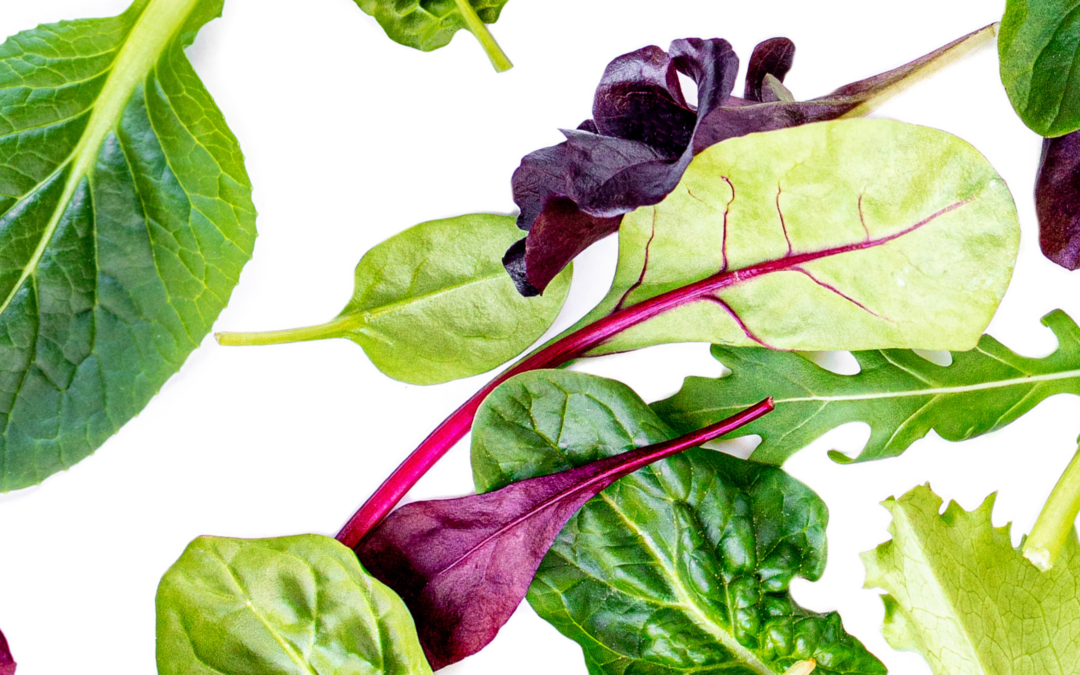
by Wildwood Outdoor Living | Sep 1, 2021 | Gardening 101
September is the perfect time to sow your seeds directly into the soil for most leafy greens. These plants thrive in cool environments. With the average growth time of 30-40 days, you can go ahead and imagine yourself serving your impressive homegrown leafy green dish at thanksgiving this year. To get you growing, we’ll help you with what you will need, what you will need to do and when you will need to do it.
VARIETIES
When it comes to choosing which leafy green you want to grow you could consider which variety you purchase most often. Or you could explore the many different kinds you can’t find in a grocery store. Maybe the best choice for you depends on what you’re going to make with it. The great thing about leafy greens is that they don’t take up much space in the garden, so you’re free to choose a few different types if your space allows. We have a lot of leafy green varieties at Wildwood Outdoor Living Centre, and we’ve chosen a few favourite varieties for you to explore below.
LETTUCE
 |
ILEMA – Produces heads that are impressively voluminous, with substantial weight and fast growth. It has a refined flavour and pairs nicely with Fossey. It can be harvested from the baby leaf stage to full-sized mature heads, open pollinators. |
 |
FRECKLES – The mid-sized plant is open with glossy, green leaves flecked with maroon; making it a delightful and colourful addition to salad mixes. |
 |
HAMPTON – Hampton organic lettuce seeds produce a voluminous oak leaf lettuce with a high leaf count and dark, shiny leaves. Nice flavor, good texture, and easy harvest by hand or machine. |
 |
RUBY & EMERALD DUET – blended seeds for an emerald-green baby butterhead with softly folded leaf rosettes together with a lovely, deep-red, ruffled, and crispy mini leaf lettuce. |
KALE
 |
KALE BEIRA TROCHUDA – Trochuda Beira Portuguese Kale Seeds produce thick leaves with a flavour somewhere between Scots kale and cabbage. This hybrid version of traditional Portuguese kale has better heat resistance in summer, but is also winter hardy, with a taste that is improved by frost. |
 |
DWARF GREEN CURLED – Ultra-hardy, a great source of winter ‘greens’. Also known as ‘borecole’. Densely packed leaves with frilled edges on compact plants. Flavour improves with a touch of frost. |
 |
RED RUSSIAN – Tender for salads and good for bunching, the red and purple hues turn a rich, dark green colour when cooked. It may be richer in vitamins and minerals than other greens and is very disease resistant. |
 |
IMPROVED SIBERIAN – Heavily frilled, large leaves with long succulent stalks grow out to form stout, heavy-set, dwarf plants only 30-42cm (12-15″) tall. The leaves are bright blue-green ready for use all winter. |
ARUGULA
 |
ARUGULA RUNWAY – Peppery, sharp-flavoured arugula (a.k.a. rocket or roquette), provides a wonderful punch of piquant flavour to any green salad or a scrumptious contrast tossed with fresh sliced fruit or served under the meat, chicken, or fish just hot off the barbecue. |
 |
ARUGULA RUSTIC STYLE – Italian heirloom forms rosettes of deeply indented leaves with a piquant, tangy flavour. Great in salads, pizza or pasta. Lasts longer than the common arugula. Pretty edible yellow blossoms. |
 |
HEIRLOOM RUSTIC ARUGULA – Cooks prefer its deeply indented, dark green piquant leaves for savoury dishes like pizza or pasta. You’ll find the leaves’ tangy flavour is like regular arugula, but more intensely concentrated. |
 |
ARUGULA ITALIAN – Peppery flavoured, scalloped leaves develop on fast-growing plants. Flavour combines well with lettuce and other salad greens. A favourite for Italian cuisine. Begin harvesting in 35-40 days |
SPINACH
 |
BLOOMSDALE SAVOY – Large, Deeply Crinkled, Dark Green Leaves. Fresh Flavour, Slow to bolt. Plant early direct (might not germinate if soil too warm). All seed is untreated and naturally grown in the Comox Valley on Vancouver Island. |
 |
GANGBUSTER ORGANIC – Fast-growing and weather tolerant new spinach with juicy thick leaves and especially tasty mild sweet flavor. Pick individual leaves or cut whole plants over a long harvest season. |
 |
SPINACH SPACE – This variety is lovely both cooked and raw, as baby leaf spinach, or full size. It will work in larger containers for early spring and late fall growing. |
 |
ORIENTAL GIANT – has an excellent mild and sweet flavour, rich green colour and a succulent crunchy texture. This extremely fast-growing hybrid spinach, bred in Japan, has amazing vigour and quickly produces giant leaves that are at least double to triple the size of other spinach varieties. |
HOW TO PLANT
After you’ve chosen your leafy green seeds, you’re ready to start planting! Whether you’ve decided to plant your seeds in a container or in the ground, it’s best to plant your seeds in a spot with full sun. Use a rich soil with good drainage. In a pot, you’re going to fill at least 6 inches of soil in the bottom of your container. Apply a light amount of water to the base layer of soil to moisten it, and sprinkle your seeds lightly at the top of the soil. Cover with a light amount of soil, and gently tap the surface. To keep your seeds in place, cover your leafy greens with 2-3 inches of mulch. Once you’re finished, you can give those babies a good gulp of water. Your seeds will take 7-14 days to germinate. Water when the top inch of soil dries out, about twice a week.
HOW TO HARVEST
Depending on your seed selection, you can expect to harvest your leafy greens between 30-40 days, some sooner and some later (be sure to check your seed package). Once your leafy green is ready to harvest, you can collect your leafy greens leaf by leaf in smaller portions. Or, if you would like to harvest it all at once, just cut the full head off at the soil level.
You’re now ready to start growing your own leafy greens. With these versatile vegetables, you’ll have endless options for breakfast, lunch, and dinner! Wilted in stir-fries, blended in smoothies, mixed into a big hearty salad, used as a topping, or wrapped around your favourite sandwich, burrito, or burger! Leafy greens are easy, fast-growing, low maintenance and high in nutrients! A must-have in every garden.
Have a suggestion or question?
Sign up
here for more blogs dedicated to better gardening!
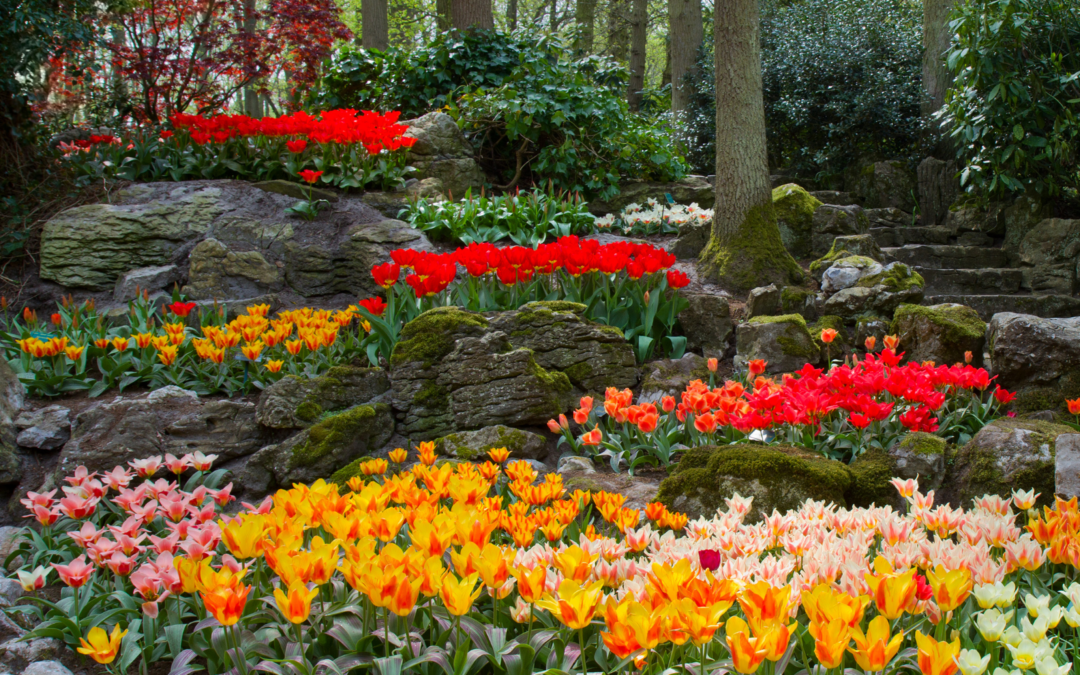
by Wildwood Outdoor Living | Aug 24, 2021 | Gardening 101
Now that Fall is approaching, it’s time consider which fall bulbs are the best choice for you to plant this season. A great way to do this might be to reflect on previous years. Perhaps you were surprised to find that your garden didn’t have the beautiful smell you were looking for. Maybe after all your fall bulb planting efforts, your beautiful spring blooms were gobbled up by deer before you could even enjoy them. Your garden bed might have looked a little sparse and could use some fluff. Or maybe you could appreciate some pollinators to keep your garden at it’s best. Whatever it is, we’re going to help you pick the right fall bulbs for your garden this season. Here are a few important categories for you to consider when choosing your fall bulbs this season.
Deer Resistant
Our friend the deer. As graceful and beautiful as they are, they don’t always make great house guests. If they make their way to your yard it’s not likely they’re stopping by for a quick “how ya been”. It’s most likely that they’re there to steal a bite of all your tasty new beautiful spring blossoms that you waited months and months to enjoy. We don’t blame them, who wouldn’t wander into a yard with dessert was growing from the ground up. If you have had this problem in the past the good news is that the solution is a lot easier than tangling string all over your garden. This fall, your best option is to consider planting bulbs that are resistant to deer. Meaning that deer won’t be tempted by the taste of your garden, so they’ll move on to the next yard (sorry neighbors). At Wildwood Outdoor Living, we have plenty of deer resistant options for you to choose from. If you have a deer problem, get longevity out of your garden with these deer-resistant fall bulbs.












Bee-Friendly
There are many reasons why you might want to attract bees to your garden. Bees are the primary pollinator for all of our produce and plants. Without bees our plants, produce and overall air quality would suffer. Thankfully, gardeners around the world are helping to take care of the declining bee population by planting resources for them to thrive and pollinate. If your garden looked tired last year, count on Mother Natures best pollinators to pick it back up again. When you attract bees to your garden, these pollinators will attract small ecosystems, creating healthier soil and water. Bee friendly bulbs will attract bees to your garden, letting your plants flourish and even multiply!









Fragrant
Who would have thought that not all flowers are fragrant? You walk by a flower, you smell it, and nothing?! No magical fragrance to keep you humming along with your day. Sometimes you learn the hard way by planting all your fall bulbs and when spring comes, it still smells like winter. If you enjoy the fragrant smell of spring, fresh cut flowers or crafting sachets, potpourri or essential oils, fragrant fall bulbs are perfect for you. Each flower beautifully crafted with it’s own scent for you to enjoy in the privacy of your own home.









Naturalizing
Naturalizing your garden is just as it sounds. Inviting natural elements that are found outside of your garden in. These elements include non-invasive plants and that are indigenous to the area and the micro-organisms they attract. Proving you with richer soil and healthier, happier plants that come back year after year with little to no maintenance. Most often you will use short stock flowers when naturalizing, creating a layered garden affect for gardens that are missing some dimension.












After you’ve made your fall bulb selection, be sure to compare the different colours that are available in your bulb of choice. For a calmer feel, try choosing a cool color as your main focal point. For more energy, go with a warm primary color. You can then plan out your garden according to your individual bulb needs. If you’re ever stuck, send us an email to info@wildwoodoutdoorliving.com and we will be happy to help you plan the perfect fall bulb arrangement.
Sign up
here for more blogs dedicated to better gardening.

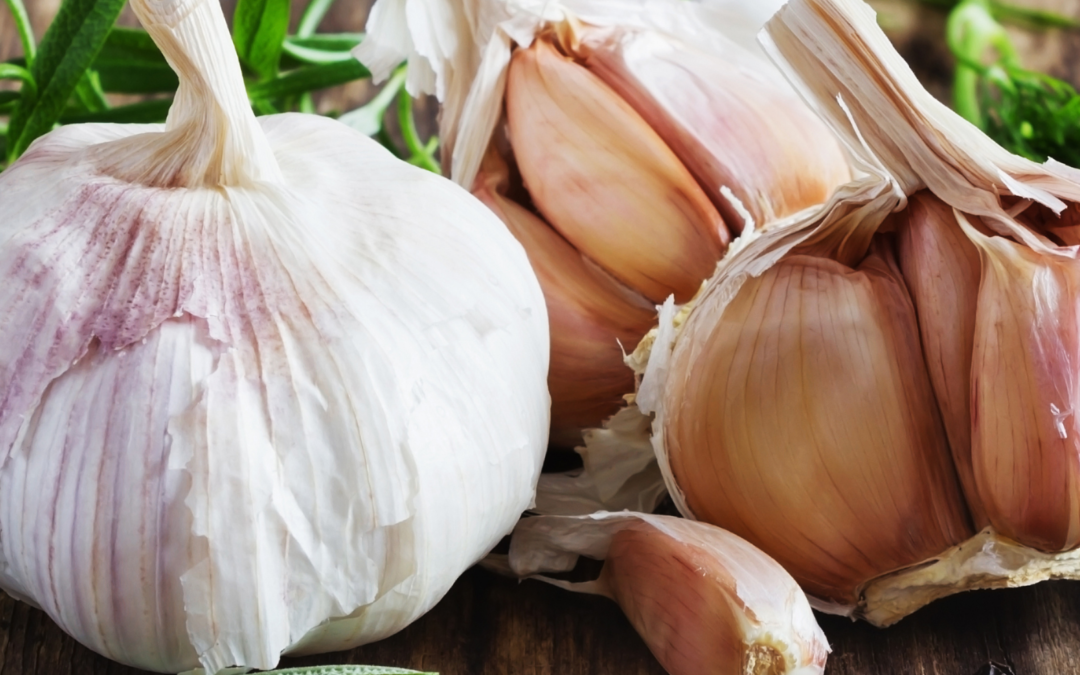
by Wildwood Outdoor Living | Aug 19, 2021 | Gardening 101
Mm, Garlic…It makes almost every dish better! Who doesn’t add a little extra garlic in their recipes? Roasted garlic, garlic bread, garlic potatoes, honey garlic…the more the better! If you enjoy cooking then you know the difference in taste between using fresh garlic and minced garlic from a jar. You might even know the difference between “fresh” garlic from the store and fresh garlic from your garden. At Wildwood Outdoor Living, we have been growing garlic for over 40 years and we’ve grown many different kinds of it. Spanish Roja, German Red Hardneck, Chesnok Hardneck, Garlic Legacy, Garlic Siberian, Garlic Duganski, Garlic Elephant, Red Russian Garlic and more! If you’re interested in growing garlic or if you already grow it and you’re interested in learning more about the different kinds, you’re in the right place. In this blog you’ll find our tried and true methods of growing garlic, as well as some interesting garlic choices you’ll want to try growing this season.
1.) Types of Garlic: Hardneck & Softneck

A comparison between hardneck and softneck garlic.
Photo by David Fuller | Image by Homestead.com
Softneck: Softneck garlic grow much quicker than Hardneck Garlic. They enjoy warmer climates and produces many small cloves per 1 bulb. Unlike Hardneck, they don’t grow flowers known as scapes but they do tend to store better. Below are the two most common types of Softneck garlic.
Artichoke: Artichoke Garlic resemble the flowering of an artichoke. They grow 10-14 multi-size cloves. They produce no scape and require less work.
Silverskin: The best performer in garlic storage! Known for their spicy and complex taste. Silverskin Garlic can be stored for up to 12 months.
Hardneck: Hardneck garlic produce a woody stock with a flower called scape. Garlic scapes are highly enjoyed in cooking and produce foods like pesto! When harvested you can expect a single row of cloves wrapped together in a papery sheath to form the head of bulb of garlic. Hardneck garlic grows big bulbs and enjoy cooler climates. Here are some of the best garlic choices for you to try this season.
|
Name:
|
Flavor:
|
Per bulb:
|
Size:
|
Notes:
|
|
Bogatyr
|
Strong, Fiery
|
5-7 Cloves
|
Large
|
Strong, long-lasting heat. One of the hottest hardneck varieties
|
|
Duganski
|
Strong, Fiery
|
7-10 Cloves
|
Large
|
Fiery flavor that mellows out to a rich garlic aftertaste
|
|
German Red
|
Strong, Spicy
|
5-7 Cloves
|
Large
|
Great full-bodied and long-lasting flavor. Stores very well
|
|
German White
|
Strong, Robust
|
5-7 Cloves
|
Medium
|
Great for roasting. Stores very well. Grows great in northern locations
|
|
Legacy
|
Medium, Strong
|
7-12 Cloves
|
Medium
|
Great flavor. Easy to peel. Cold hardy.
|
|
Metechi
|
Strong, Hot
|
5-7 Cloves
|
Large
|
Cold Hardy, vigorous grower and long lasting in storage.
|
|
Mexican
|
Rich, Medium
|
8-16 Cloves
|
Small, Medium
|
Milder flavor when baked. Colorful.
|
|
Music
|
Medium, Strong
|
4-7 Cloves
|
Large
|
Cold hardy. Very hot when eaten raw. Great for roasting.
|
|
Russian Red
|
Strong, Hot
|
6-8 Cloves
|
Large
|
Cold hardy. Grows great in northern locations.
|
|
Siberian
|
Strong, Hot
|
5-9 Cloves
|
Large
|
Mild flavor when stored. Great for roasting/cooking
|
|
Spanish Roja
|
Rich, Spicy
|
8-9 Cloves
|
Medium
|
Rich complex flavor, long-lasting taste. Excellent for cold climates.
|
2.) Growing Garlic
When To Grow Garlic: Plant in mid-September to October, at least 4 weeks before ground freezing. Many varieties can also be planted in early Spring.
How To Plant Garlic: Break bulbs into individual cloves. Make sure cloves are hard and solid. Plant larger cloves as they will produce larger bulbs – you can use the smaller cloves for dinner! Plant root plate end down, 3 inches deep, in well-drained soil. Add organic matter/ manure or mulch on top. Raised beds are recommended, as soil should be well draining. Spacing of at least 5 inches on 1-foot rows will provide adequate sunshine, any extra spacing will allow bulbs to grow larger. Keep soil moist.
3.) Harvesting Garlic
Growing/Harvesting Garlic: In the spring, harvest the flowers 10-14 days after they appear. This allows the plant to put its energy into the bulb in the ground, not into making seeds. In July, harvest the bulb once it has matured, and the leaves brown off. Dig from the ground, and immediately brush off the soil from around the roots, very gently!
Curing & Storing Garlic: Drying is an essential part of curing the bulbs, so do not wash them in water. Remove from direct sunlight, and leave undercover in a breezy area. With stalks/leaves attached, tie in bundles, or spread on screens/drying racks. Two weeks’ drying time is ideal. To store, hang in netted sacks/bags. Store in a cool, dry and well-ventilated area with a stable temperature of 15°C.
Do you know the best part of growing garlic? They multiply and store well, so you will never run out! Garlic is one of the easiest, most versatile plants to grow this season. It adds flavour to almost every dish and makes a well-received gift when you have enough to share. Enjoy your garlic planting, and please feel free to share any tips and tricks you have for planting garlic!
Sign up
here for more blogs dedicated to better gardening
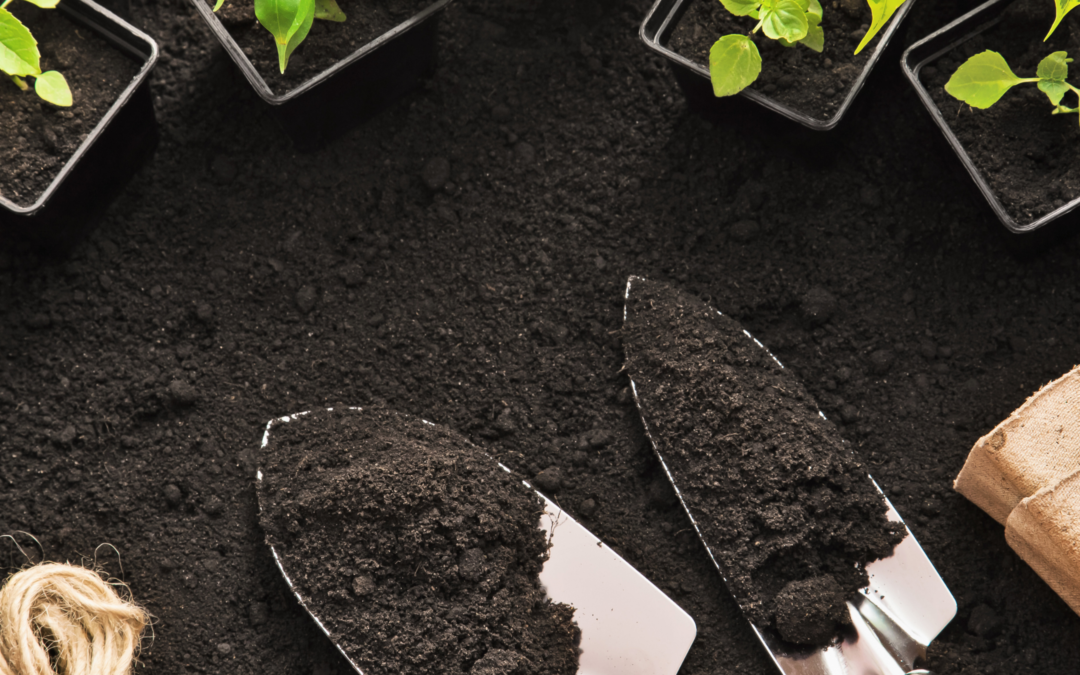
by Wildwood Outdoor Living | Aug 11, 2021 | Gardening 101
If you haven’t heard of sustainable gardening, or if you have and you’re looking for ways to implement eco-friendly changes to your garden, we’re here to help! In this article we will discuss what sustainable gardening is, why it is important, how you can make changes at home and how we can help.
What is sustainable gardening?
Sustainable Gardening is an organic method of gardening that deters the use of products that harm the environment. These products include chemicals like pesticides and unnatural fertilizers, gardening tools that use power or gas tools and the use of plastic or new material products. Unfortunately for us, some of our unsafe household products come with warning labels that are too small to notice or read clearly. Allowing us to use them without knowing the harm that they can have on our health and environment. Let’s take a closer look at some of the products you might want to reconsider if you’re trying to create a more sustainable garden.
Pesticides & Herbicides
Pesticides are chemicals created by humans as a tool to remove unwanted guests (weeds, insects, fungi…etc.) from our gardens and crops. Used largely in farming for produce, pesticides are also used at home. Although seemingly harmless, pesticides have been proven to have extreme negative impacts on our health and wellbeing, as well as the planets.
For our health, the use of pesticides can lead to organ damage, reproductive issues, cancer, vomiting, headaches and more. For our environment, we see the damages created by pesticides in our air, water, and soil by affecting the micro-organisms that live in these ecosystems. As a result, this has largely impacted the health and population of many wildlife species. For some birds, consumption of insects poisoned by pesticides has affected their reproductive organs by producing weak eggshells that get crushed when nesting. Pesticides have also affected the population of many bird species by killing the insects needed to feed these birds.
What this information and research has allowed us to do, is to identify where we can make changes for the better in our gardens, by making them more sustainable for the planet and ourselves. To reduce the use of chemicals in your garden, create a sustainable compost to feed your plants and shop for products that are organic. At Wildwood Outdoor Living, we offer a huge variety of organic alternatives to help make your garden more sustainable. Here are a few of our favorite organic products, to help you grow a sustainable garden at home.




Garden Tools
Picture yourself in your garden, enjoying the sun and the plants. Everything is healthy and growing. It’s not often we look at our garden and notice all the plastic waste that we might have created along the way. If you look again, you might notice plastic netting, string, pots, garden tools, labels, and packaging. In sustainable gardening, we want to identify the ways we can reduce our carbon footprint by reducing waste. Let’s look at how we can reduce waste in our garden, allowing us to do our part as gardeners to clean up the planet.
Netting/String – Using plastic netting or string in your garden can be lethal to many animals including deer and birds. These plastics are non-recyclable and often end up in landfills that spill into the ocean trapping whales and other marine life. A sustainable gardening alternative to using plastic netting and string, is twine. Twine is made from renewable resources like cotton, hemp and jute and is biodegradable, making this a perfect sustainable gardening alternative to plastic netting and string.
Potting – Often when we purchase our plants, they come in a plastic container. From that container, we replant them into a small pot and then continue to replant them into larger pots as they grow. If you’re using plastic pots, that’s three or more plastic containers for just one plant. As an alternative to plastic pots and containers, try using biodegradable ones! Biodegradable pots are a leader in sustainable gardening, as they are completely composed of organic materials and are also fully biodegradable.
Labels – This is one of the easiest ways to make your garden sustainable and often the first practice to put in place for beginners. Let’s consider how many plants we have in our garden. Now, of that total, how many of those plants have a label? How many of those labels are going in the garbage when the season is over? That amount of waste can be reduced by using popsicle sticks or rocks as labels to mark your beautiful plants, making them 100% sustainable.
Garden Tools – When purchasing garden tools, try to purchase tools that are made from recycled materials, have no plastic accessories or that are good quality, to ensure a one time purchase. Sustainable alternatives to plastic garden tools are tools made from recycled metal and wood. If you can’t find the sustainable alternative for the tool you need, try asking a neighbor to borrow one!
Not only can the use of chemicals and plastic waste pose serious health risks to ourselves and our planet, but it also introduces chemicals to our plants health and taste. By making your gardens more sustainable and organic, you’re not only improving your health, helping our wildlife friends, and decreasing your carbon footprint but you can also expect healthier chemical free plants!
As gardeners, our planet needs us to do our part and help where we can. Sustainable gardening is a growing method of gardening which fosters unlimited options and creative ideas to keep our green thumbs growing. Stay tuned for more sustainable gardening tips and tricks from Wildwood Outdoor Living Centre.
Have a suggestion or question?
Sign up
here for more blogs dedicated to better gardening!
















































































